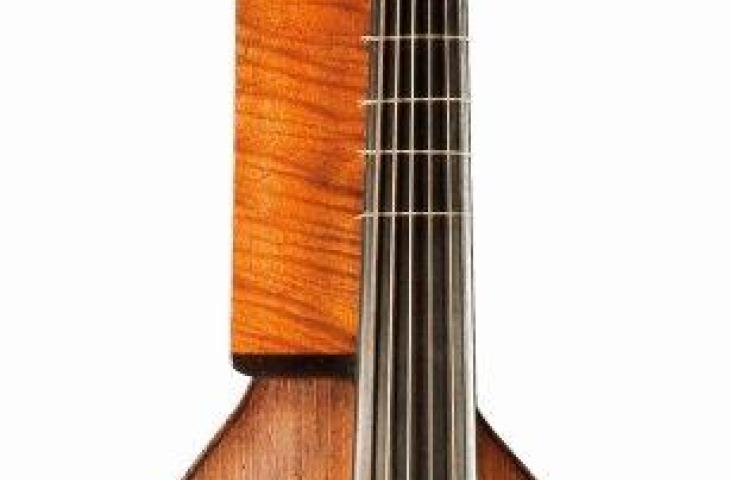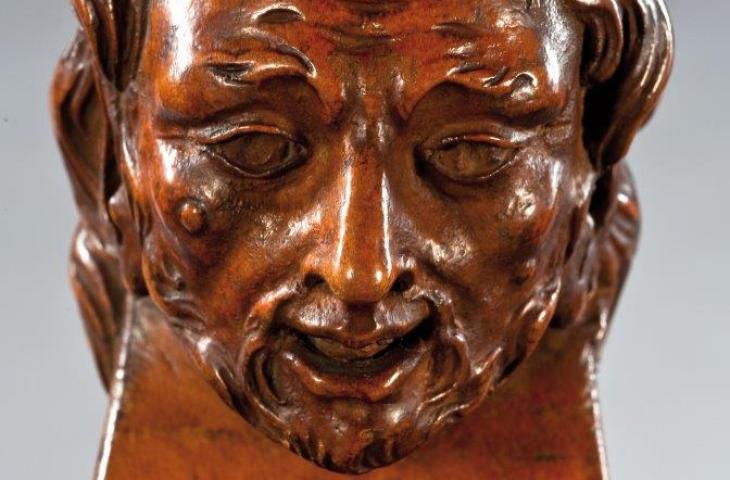Baryton

Baryton, ?, Southern Germany or Austria, early 18th century, inv. 0231
Baryton

Baryton, ?, Southern Germany or Austria, early 18th century, inv. 0231
The baryton was probably already being played at the beginning of the seventeenth century, but really flourished only later. The reputation of the instrument rose strongly during the second half of the eighteenth century, under the influence of Joseph Haydn, long the Kapellmeister or music director of the Esterházy family. His patron Prince Nikolaus himself played the instrument and Haydn consequently composed about 175 works for it, the trios for viola, cello and baryton being among the most well-known for this unusual instrument.
With its sloping shoulders, frets and sculpted head, it appears very much like the viola da gamba. Contrary to the gamba family, however, it has a number of sympathetic strings in wire mounted on the back of the neck. Their number can vary considerably and they have a dual function: they add to the resonance by autonomous vibration with the bowed gut strings and they can be plucked with the thumb of the left hand.